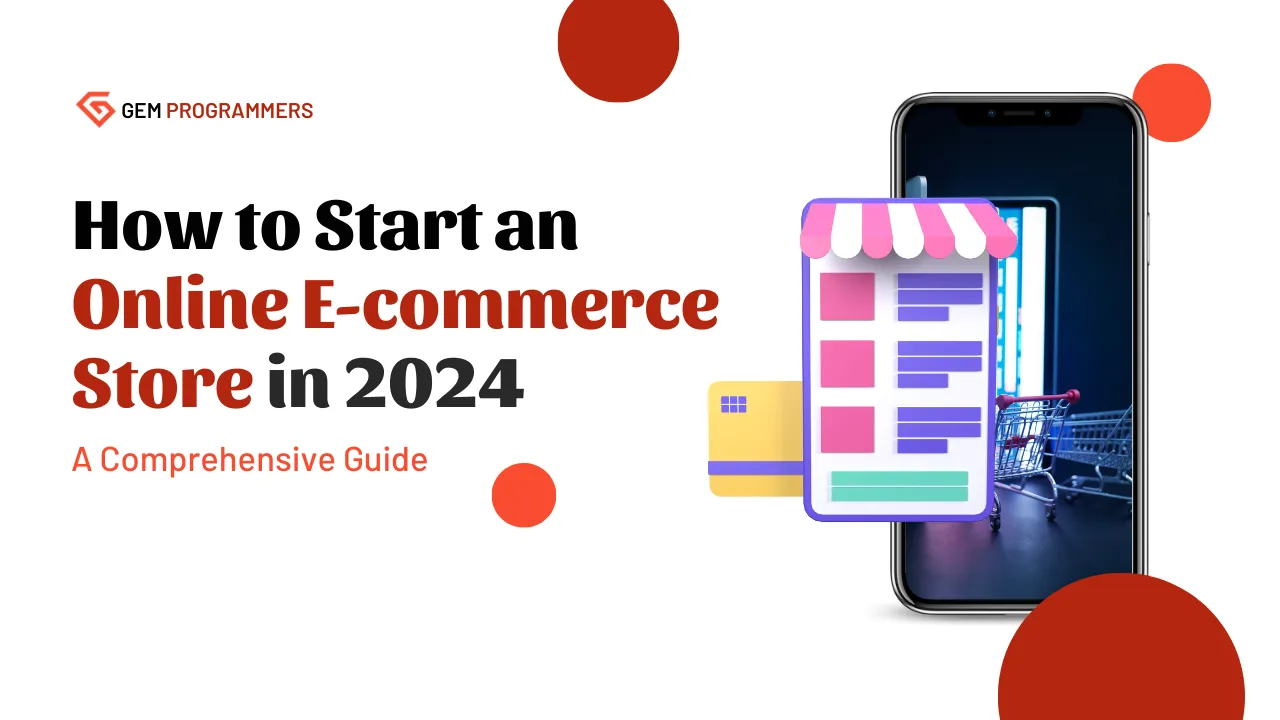In today’s digital age, launching an online e-commerce store is not just a trend but a strategic move to expand your business’s reach and capitalize on global markets. Whether you’re an aspiring entrepreneur or a seasoned business owner, this step-by-step guide will walk you through the essential elements to successfully create and launch your own e-commerce store in 2024.
Define Your Business Idea and Niche
Every successful e-commerce venture starts with a clear business idea and a well-defined niche. Begin by identifying what products or services you want to sell and who your target audience is. Conduct thorough market research to understand consumer preferences, trends, and potential competition. For instance, if your company, Gem Programmers, specializes in website development, consider offering tailored e-commerce solutions or digital products that complement your expertise.
Choose a Memorable Business Name and Domain
Selecting a unique and memorable business name is crucial for branding your e-commerce store. Ensure the name resonates with your offerings and is easy to remember. Once decided, secure a domain name that aligns with your brand identity. Platforms like Shopify simplify this process by allowing you to check domain availability and register your domain seamlessly through their interface.
Select the Right E-commerce Platform
Choosing the right e-commerce platform is pivotal for your store’s success. Platforms like Shopify, WooCommerce, and BigCommerce offer robust features and intuitive interfaces tailored to meet various business needs. Consider factors such as ease of use, scalability, available integrations, and customer support when making your decision. Shopify, for example, provides a user-friendly experience for setting up, managing, and scaling your e-commerce operations.
Customize and Set Up Your Online Store
Once you’ve selected your platform, it’s time to customize your online store to reflect your brand’s identity and values. Choose a visually appealing theme that enhances user experience and aligns with your products or services. Include essential pages such as an about us page, contact information, shipping policies, and FAQs to build trust with your potential customers. Integrate secure payment gateways to facilitate smooth transactions and offer multiple payment options for customer convenience.
Source Your Products or Services
If you’re selling physical products, establish reliable supply chains or partnerships with reputable suppliers to ensure product quality and timely delivery. For service-based businesses like Gem Programmers offering e-commerce website development, clearly outline your service offerings on your website and showcase your portfolio or case studies to demonstrate your expertise and credibility.
Implement Effective Marketing Strategies
A successful e-commerce store requires robust marketing strategies to attract and retain customers. Utilize digital marketing techniques such as search engine optimization (SEO), social media marketing, email campaigns, and influencer partnerships to drive traffic to your website. Create compelling content, such as blog posts, tutorials, or product demonstrations, to engage your audience and establish your brand as an authority in your niche.
Optimize for Mobile and User Experience
Given the increasing prevalence of mobile shopping, optimizing your e-commerce store for mobile responsiveness is essential. Ensure your website loads quickly, is easy to navigate on smaller screens, and offers a seamless shopping experience across all devices. Test your checkout process to minimize friction and maximize conversion rates, thereby enhancing overall user satisfaction and retention.
Monitor Performance and Iterate
Launching your e-commerce store is just the beginning of your journey. Continuously monitor key performance metrics using analytics tools provided by your chosen platform. Track metrics such as website traffic, conversion rates, average order value, and customer retention to gain insights into your store’s performance. Use this data to identify areas for improvement and refine your marketing and product strategies accordingly.
Provide Exceptional Customer Support
Delivering exceptional customer support is paramount to building customer loyalty and satisfaction. Offer multiple channels for customer inquiries, including live chat, email support, and responsive social media channels. Respond promptly to customer queries and concerns to demonstrate your commitment to their satisfaction and build long-term relationships.
Stay Ahead with E-commerce Trends and Innovations
To stay competitive in the dynamic e-commerce landscape, stay updated with emerging trends and technologies. Embrace innovations such as AI-driven personalization, augmented reality (AR) for virtual shopping experiences, and voice commerce to enhance customer engagement and satisfaction. Adopting these technologies can differentiate your store and provide a unique value proposition to your target audience.
Start Your E-commerce Journey with Gem Programmers Today!
Embark on your e-commerce journey with confidence and strategic planning. By following these comprehensive steps, you’ll be well-equipped to launch and grow a successful online store in 2025. Remember, success in e-commerce requires dedication, adaptability, and a customer-centric approach.
Are you ready to turn your e-commerce aspirations into reality with Gem Programmers? Contact us today to explore how we can help you build a cutting-edge e-commerce store that stands out in the digital marketplace.

